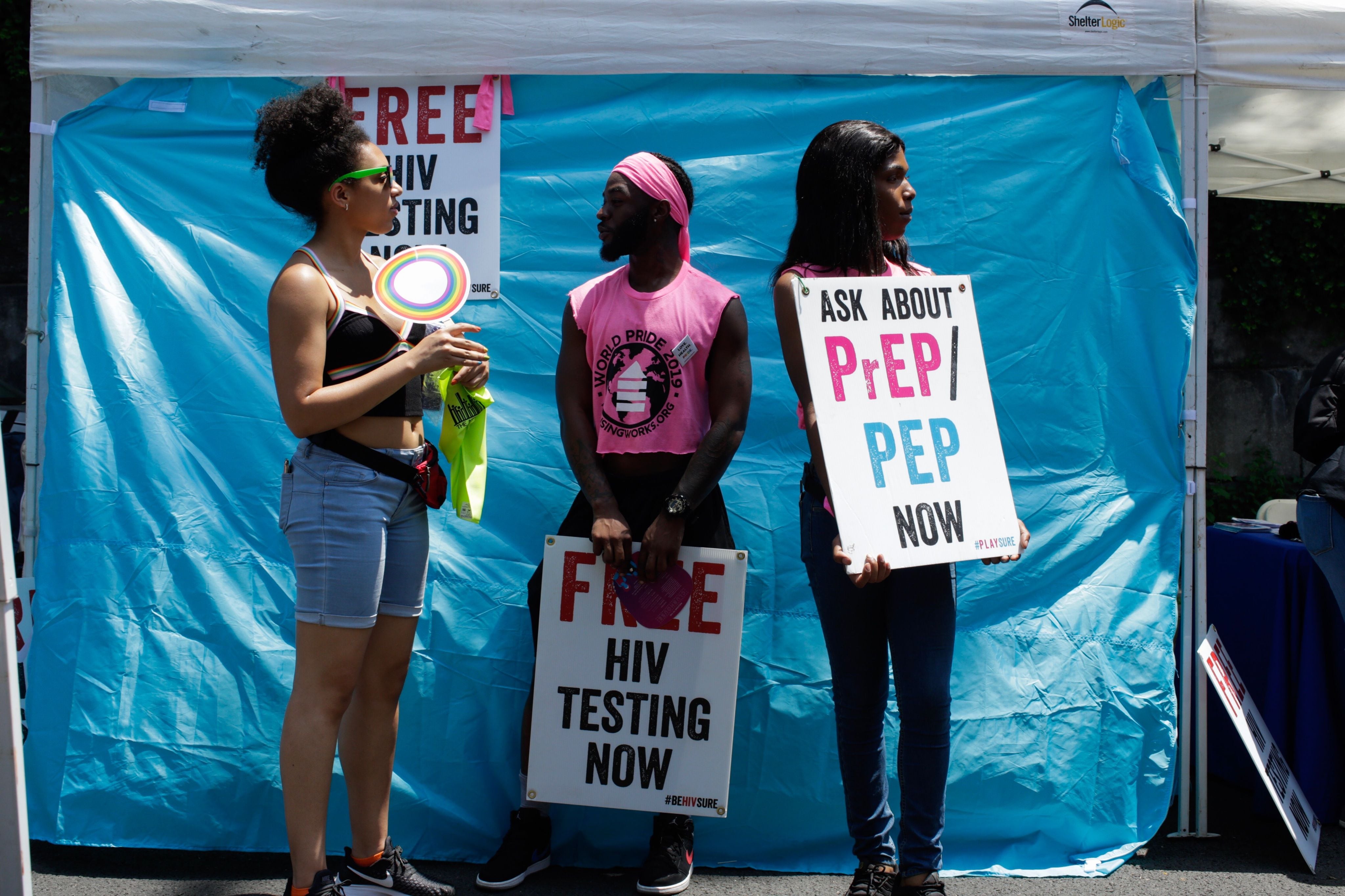Public health, explained: Sign up to receive Healthbeat’s free New York City newsletter here.
Following years of steady declines, new HIV diagnoses have ticked upward in New York in recent years, particularly among Latino New Yorkers, mirroring national trends.
The total number of new HIV diagnoses across the state declined in 2020 to 1,933, likely a result of pandemic disruptions to routine health care, and rose the next two years, to 2,318 diagnoses by 2022, according to data from the Ending the Epidemic Dashboard, a project funded by the New York State Department of Health. In New York City, new diagnoses rose in 2021 and remained fairly flat in 2022.
That uptick could reflect a catch-up in diagnoses that were delayed due to Covid-19, according to experts and advocates. But preliminary 2023 data from the Centers for Disease Control and Prevention suggest that those upward trends continued last year, and that Latino New Yorkers outpaced other racial and ethnic groups in HIV diagnoses for the first time in a decade.
Nationwide, HIV diagnoses among Latino Americans increased 17% between 2018 and 2022, according to the CDC.
Daniel Castellanos, vice president of research and innovation at the nonprofit Latino Commission on AIDS, said he had expected the rise in new HIV diagnoses in New York would start to level off in recent years. But that’s not what the data show.
“By 2022, when the data was released, you could see that it was going up,” he said. “For 2023, the data, though it’s preliminary, shows that it’s still increasing, particularly for Hispanics.”
The New York City Department of Health’s 2022 HIV Surveillance Annual Report, released last fall, acknowledged that progress toward its goals of ending the HIV epidemic had “slowed compared with previous years.” The report cited the impact of Covid-19 on the health care system and “persistent inequities” in access to HIV prevention, testing, care and treatment, particularly for communities of color.
During the depths of the Covid-19 pandemic, disruptions to people’s access to health care set the conditions for an increase in new HIV infections, said Denis Nash, a professor of epidemiology and executive director of CUNY’s Institute for Implementation Science in Population Health, which developed the ETE Dashboard.
Not only did people with HIV have more difficulty maintaining access to medications that suppress their viral load, he said, but also those who were HIV negative and at high risk for the virus faced disruptions in access to pre-exposure prophylaxis (PrEP), an HIV prevention medication.
“Those two things combined are a recipe for an increase in transmission,” Nash said. “Those two things were going in the opposite direction before Covid, and that’s what was helping us reduce the number of new infections year over year.”
Tailoring access to HIV care to individual circumstances is key, said Ramona Cummings, chief program officer at Alliance for Positive Change, a nonprofit organization that serves New Yorkers living with HIV and other chronic health conditions. And some of the technological shifts that came with Covid-19 have helped expand access.
“Maybe you don’t have a MetroCard — we can offer the services to you via telehealth. We can call you and engage. We can offer you a Zoom so that you can call in and talk to us and participate in an intervention that keeps you socially connected,” Cummings said.
There’s another bright spot when it comes to local efforts to fight the HIV epidemic, said Guy Williams, director of prevention at Alliance: increased use of PrEP.
Statewide data show that PrEP utilization has climbed steadily in the last decade, from about 3,000 individuals filing at least one prescription for the medication in New York in 2014 to more than 50,000 people doing so in 2022. PrEP is typically taken as a daily pill, but a new long-acting injectable form of the medicine, approved by the Food and Drug Administration in 2021, is administered every two months.
“There’s a lot more men of color who are interested in PrEP,” Williams said.
Castellanos said that expanding the usage of PrEP hinges on building trust with at-risk people, particularly those in immigrant communities, who might hesitate to access services or engage with the medical establishment.
“We have made some progress and it’s great — new medications, more openness in people’s relationships to talk about sex,” he said. “But that’s not enough. It’s not enough because an HIV diagnosis — even when there is great medication out there and it’s not like it was 40 years ago — it still impacts people’s lives. It’s a traumatic moment in people’s lives.”
Eliza Fawcett is a reporter covering public health in New York City for Healthbeat. Contact Eliza at efawcett@healthbeat.org.







